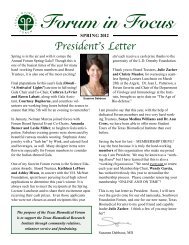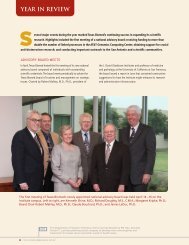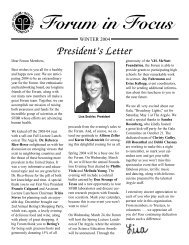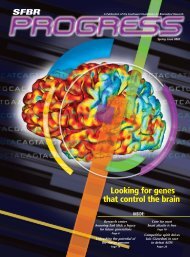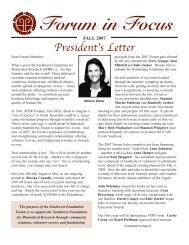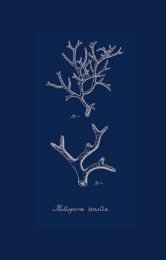Texas Biomed Science Report 2011-2012 - Texas Biomedical ...
Texas Biomed Science Report 2011-2012 - Texas Biomedical ...
Texas Biomed Science Report 2011-2012 - Texas Biomedical ...
Create successful ePaper yourself
Turn your PDF publications into a flip-book with our unique Google optimized e-Paper software.
Larry B. Cummins, D.V.M.<br />
Associate Director for Veterinary Resources<br />
and Institute Veterinarian<br />
John C. Bernal, D.V.M.<br />
Assistant Director for Veterinary Resources<br />
SNRC veterinarians and their technicians support all aspects of<br />
clinical medicine, pathology, disease model development, surgical model<br />
development, infectious disease and biocontainment research methods,<br />
reproductive research, and laboratory animal medicine and breeding.<br />
Collaborative efforts with <strong>Texas</strong> <strong>Biomed</strong>’s principal investigators and<br />
scientists in the many specialized areas of veterinary medicine provide<br />
the expertise needed to optimize the research objective Throughout<br />
entire research projects, from inception to accomplishing the final<br />
research objective, the veterinary resources team of veterinarians,<br />
technicians and support staff aid in study design, in-life study execution,<br />
and providing the information needed to realize the scientific aim.<br />
Veterinary Resources cares for the world’s largest captive baboon<br />
population, the world’s largest and best-characterized pedigreed<br />
nonhuman primate populations, and the largest chimpanzee census<br />
of any National Primate Research Center. Other valuable nonhuman<br />
Left to right: Wade Hodgson,<br />
Christopher Smith, Manuel<br />
Aguilar, Michael Washington,<br />
Cindy Peters, Brooke Stotler,<br />
Bill Cummins, Ty May, John<br />
Bernal, Terry Naegelin, Julyne<br />
Centeno, Jennifer Diaz, Russell<br />
Starr, Jahnni Robinson<br />
<strong>2011</strong>–<strong>2012</strong> Scientific <strong>Report</strong><br />
“The primate center’s Veterinary Resources staff ensures that each animal’s living environment<br />
is optimal while veterinary research technicians provide the ideal research setting. The center’s comprehensive<br />
training program is designed to allow animal care and technical staff to advance in their field of<br />
expertise and afford opportunities for advancement in laboratory animal care and research.<br />
We are committed to providing animals entrusted to us with the most knowledgeable, dedicated,<br />
and compassionate animal care possible in biomedical research.”<br />
Staff<br />
primate colonies that are managed and cared for by Veterinary<br />
Resources include a marmoset breeding colony and an Indian-origin<br />
SPF rhesus macaque breeding colony. The unit cares for a large breeding<br />
colony of laboratory opossums and a rodent colony, which are used<br />
in research that is preliminary to the use of nonhuman primates.<br />
All of these animal colonies are housed in all or part of 72 buildings<br />
(236,793 square feet and two 6-acre corrals). Support space for the<br />
animal care program (78,869 square feet) is located on the periphery<br />
of the campus. The animal facilities include both conventional<br />
(indoor, indoor/outdoor, and outdoor), and ABSL-3 and ABSL-4<br />
containment buildings. State-of-the art equipment is provided for<br />
the staff to conduct and support research efforts of intramural and<br />
extramural investigators and collaborators. Multiple surgical suites,<br />
animal clinics, and clinical and diagnostic pathology units are available.<br />
Many domestic and foreign veterinarians and pathologists, both preand<br />
post-doctoral, are trained by the Veterinary Resources professional<br />
staff. Seven veterinarians and two veterinary pathologists are on staff.<br />
A six-person Behavioral component within Veterinary Resources<br />
provides assistance to the veterinary staff for animal enrichment and<br />
training, behavioral modification, and abnormal behavior prevention,<br />
in addition to providing research support to investigators.<br />
E For more information on Larry Cummins, please visit www.txbiomed.org/<br />
primate-research-center/primate-research-center-staff-bio?u=124<br />
35



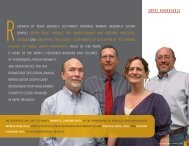
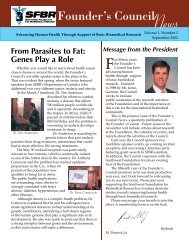
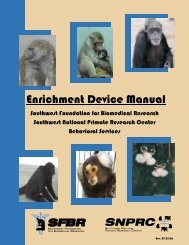
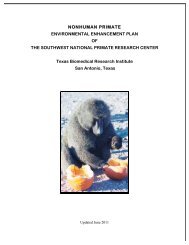
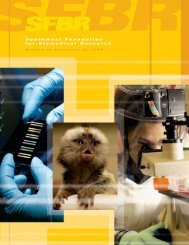
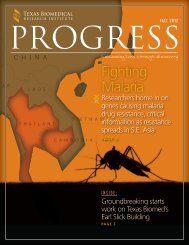
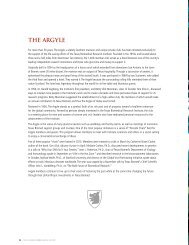
![Vol. 8 No. 2, 2011 [PDF] - Texas Biomedical Research Institute](https://img.yumpu.com/35688099/1/190x245/vol-8-no-2-2011-pdf-texas-biomedical-research-institute.jpg?quality=85)
